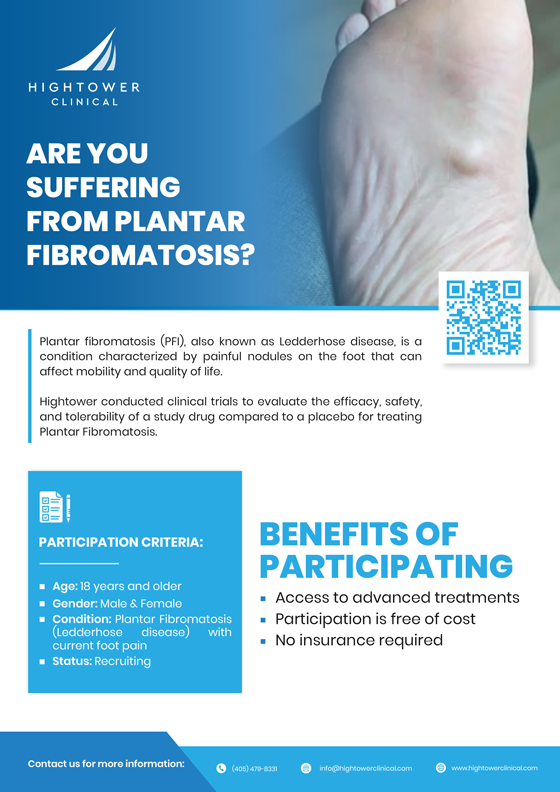Introduction
Noticing a lump in your feet that just won’t go away? You might be suffering from a condition called Plantar Fibroma. It is not just a lump, but it could get annoying, painful, and even affect the way you walk. But don’t worry as we are here to guide you about the maestros of Plantar Fibrosis, including what causes it, how to treat it, and whether it can be considered a disability.
What Is Plantar Fibroma?
Plantar fibrosis is an outgrowth in your plantar fascia. Although it’s a lump, it is non-cancerous and is a rare condition. It only appears in fascia, which is the skin that stretches below the foot from toe to heel. They are usually small and can measure around an inch. At the start, you might not notice it, but it may turn painful especially when wearing shoes.
Your doctor may diagnose you with this condition if you have invasive, quickly growing fibromas. In any case, if you see any unpleasant or new growths on your foot, be sure to consult your provider. To help you feel better, they can recommend possible courses of treatment. Talking about foot disease, you might be suffering from a type of knee disease called Tricompartmental Osteoarthritis. Both Tricompartmental Osteoarthritis and Fibroma can contribute to foot and joint pain, affecting mobility and overall quality of life.
Plantar Fibroma Causes
The exact cause of plantar fibrosis is not known. However, certain suspected factors are lying behind:
- Genetics: If your family members have had this condition, you might be more likely to develop it too.
- Foot Trauma: Repetitive stress or injury to the foot, such as running, walking long distances, or wearing unsupportive shoes, can trigger excessive collagen buildup.
- Medical Conditions: Conditions like diabetes, liver disease, and certain autoimmune disorders have been linked to the development of this condition.
- Medication Use: Some medications, such as beta-blockers (used for high blood pressure), have been associated with increased collagen production, which may contribute to fibroma growth.
Not everyone who has these conditions will have fibroma, even though they may raise your risk.
Plantar Fibroma Symptoms
The first thing you will notice is the lump in the downside arch of your feet. However, symptoms can vary depending on its size and whether it’s putting pressure on other parts of the foot.
Here’s what you should look for:
- A firm, small lump in the arch: It may start as a tiny bump but can grow over time.
- Pain or discomfort: The lump itself may not always hurt, but it can cause pain when walking or wearing certain shoes.
- Swelling or irritation: If the lump rubs against your footwear, it may become inflamed.
- Balance issues: If this condition gets large enough, it can change the way you walk, leading to strain in other areas of the foot.
To confirm the diagnosis and go over treatment options, it’s essential to speak with a physician or podiatrist if you observe these symptoms.
Treatment for Plantar Fibroma
If you’re dealing with this condition, you might be wondering “Do I need surgery?” The good news is it depends on the severity of the lumps. Non-surgical plus surgical treatments are available depending on the condition of the lumps. Additionally, there are plantar fibroma clinical trials ongoing to help combat this condition and find a potent treatment option. There are multiple benefits of enrolling in a clinical trials and gaining the advantages of it.
Non-surgical Treatments
If there is no requirement, the lumps in the foot arch can be treated without surgery. Here are some methods;
- Orthotic Inserts: Custom shoe inserts or arch supports can help distribute weight evenly and relieve pressure on the fibroma.
- Stretching Exercises: Gentle foot stretches can improve flexibility and reduce tension in the plantar fascia.
- Topical Gels & Steroid Injections: Some anti-inflammatory gels and cortisone shots can reduce pain and swelling, though they won’t shrink the fibroma completely.
- Physical Therapy: Certain therapies, like ultrasound therapy, can help improve blood flow and reduce discomfort.
Surgical Options
If this condition is causing severe pain and the surgical procedure is not possible, then a surgical process has to be performed. The most common procedure is called a plantar fasciectomy, where the fibroma and part of the plantar fascia are removed. However, surgery comes with risks, such as arch instability, so it’s usually considered a last resort.
Discover Innovative Options for Treating Plantar Fibroma
Plantar Fibroma can be more than just a small lump in your foot, it can cause discomfort, impact your mobility, and make daily activities challenging. If you’re struggling with this condition and looking for new treatment options, clinical research may offer hope.
At HighTower Clinical, we’re dedicated to advancing medical treatments through research. By enrolling in our Plantar Fibroma clinical trials, you can gain access to potential new therapies, expert medical care, and contribute to groundbreaking discoveries. Join us in exploring innovative solutions, because your comfort and mobility matter.
Is Plantar Fibroma a Disability?
This condition on its own isn’t usually considered a disability. However, if it becomes large enough or painful to interfere with your daily activities, like walking, standing for long periods, or working a physical job, you may think of it as a disability in some cases.
To determine if you qualify, medical professionals will assess how much this condition affects your mobility and quality of life. If it leads to chronic pain, severe balance issues, or difficulty performing work duties, you may be able to apply for disability accommodations or benefits.
How to Get Rid of Plantar Fibroma?
If you want to get rid of a Fibroma, your best bet depends on the severity of your symptoms. While some treatments can relieve pain, removing fibroma completely may require more aggressive approaches.
- For Mild Cases: Try footwear that is supportive, stretching, and physical therapy to keep the fibroma from growing larger.
- For Moderate Cases: Consider steroid injections or orthotic inserts to manage symptoms.
- For Severe Cases: If walking becomes painful and daily activities are affected, surgery may be the best option.
Since this condition doesn’t typically go away on its own, you should monitor the size of the fibroma. Also, look for the symptoms of fibroma over time. If you notice worsening pain or difficulty walking, consult a podiatrist for the best treatment plan.
Risk Factors of Plantar Fibroma
Anyone can suffer from this condition and there is no definite cause. However, they are more noticed in the conditions like:
Assigned male at birth:
People who are assigned male at birth have twice the chance of developing this condition than those of female.
Middle-aged people:
People between the ages of 30 and 50 are more prone to develop this condition than younger people.
People of Northern European descent:
Talking about ethnicity, people in northern Europe are more likely to develop this condition compared to others.
Share a genetic predisposition:
If someone in your biological family has this condition, you may be at a higher risk of developing it yourself because the condition may be genetically inherited.
Final Thoughts
To conclude, Plantar fibroma may be frustrating. But it doesn’t have to take over your life. You can manage it with simple stretches, use custom orthotics, or explore surgical options, there are multiple ways to reduce discomfort and improve mobility.
The main thing is to pay attention to your symptoms and take action before it becomes too painful. If you are dealing with this condition, don’t wait. Talk to a specialist and find the best treatment plan for you. Additionally, HighTower Clinical is conducting clinical trials for plantar fibroma to find a better treatment option. All we need is your contribution which can help us elevate the research and find better options.





